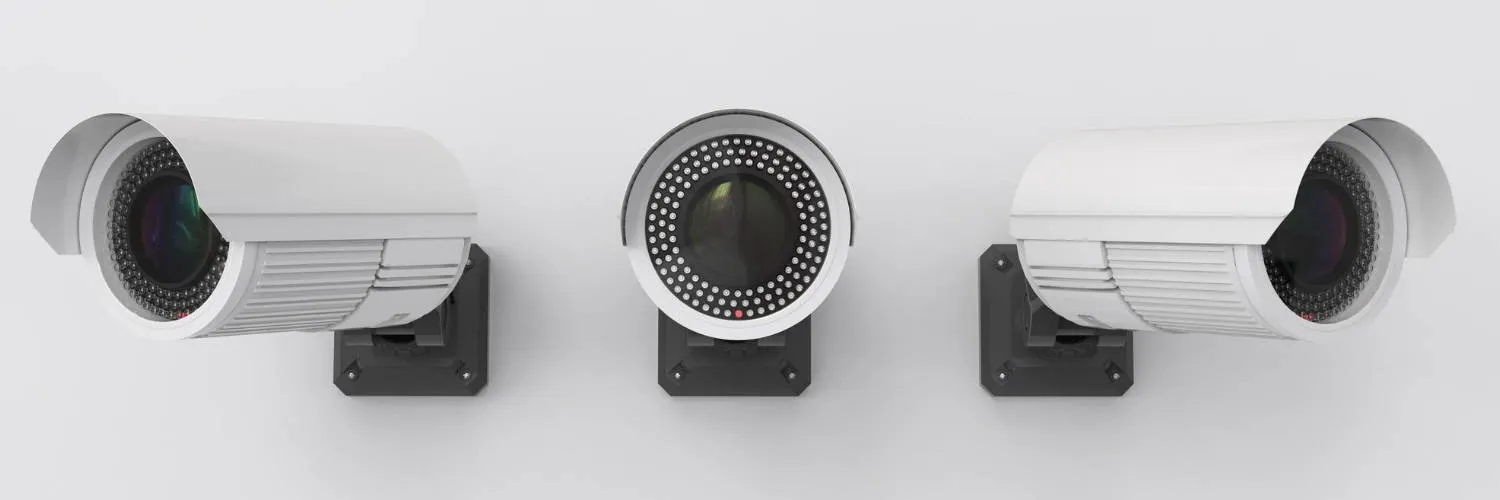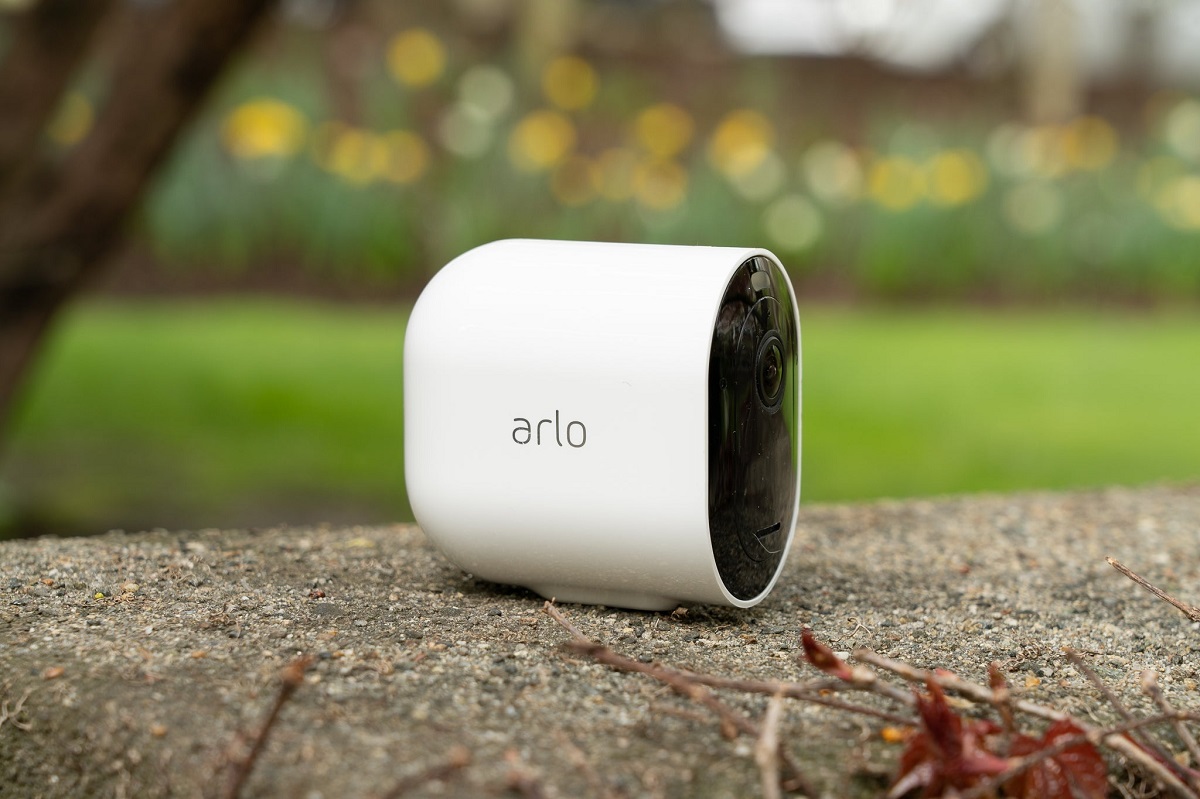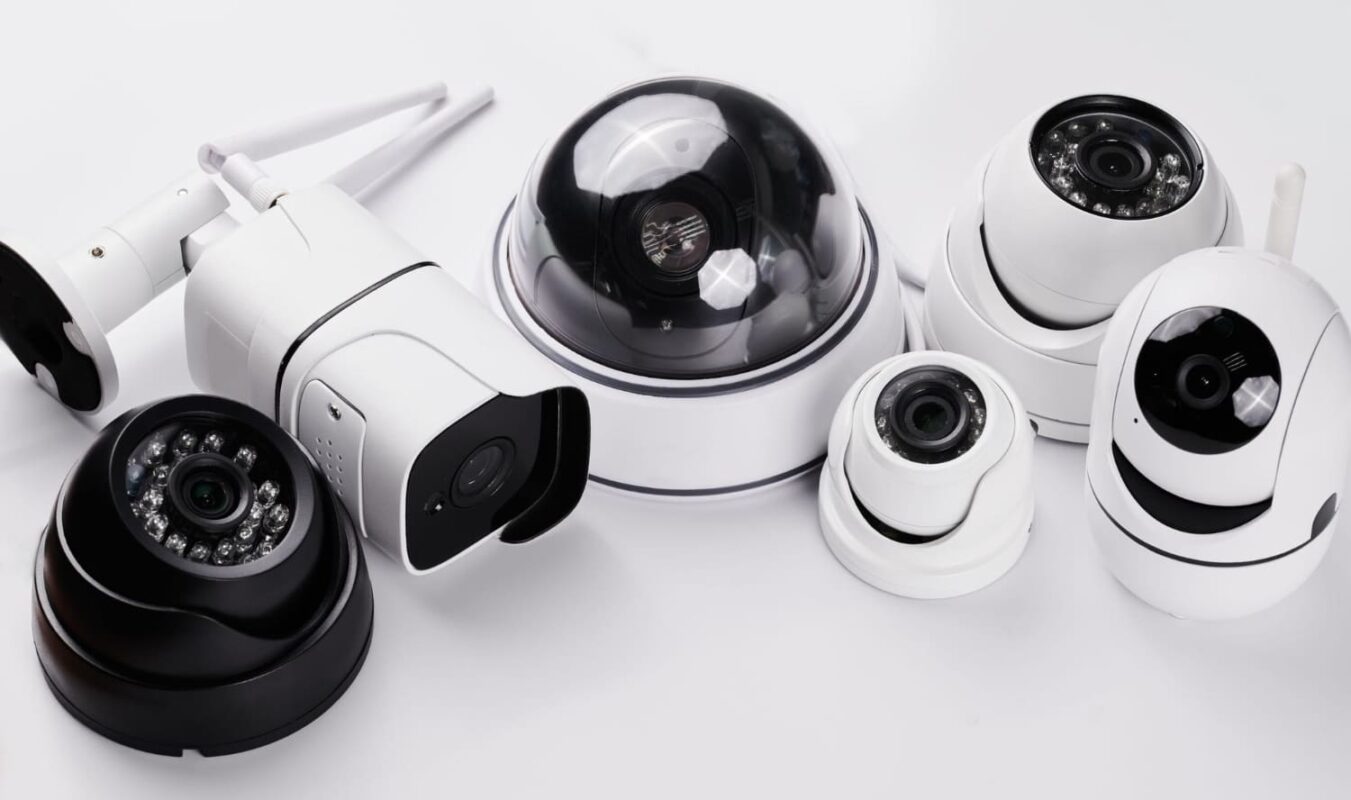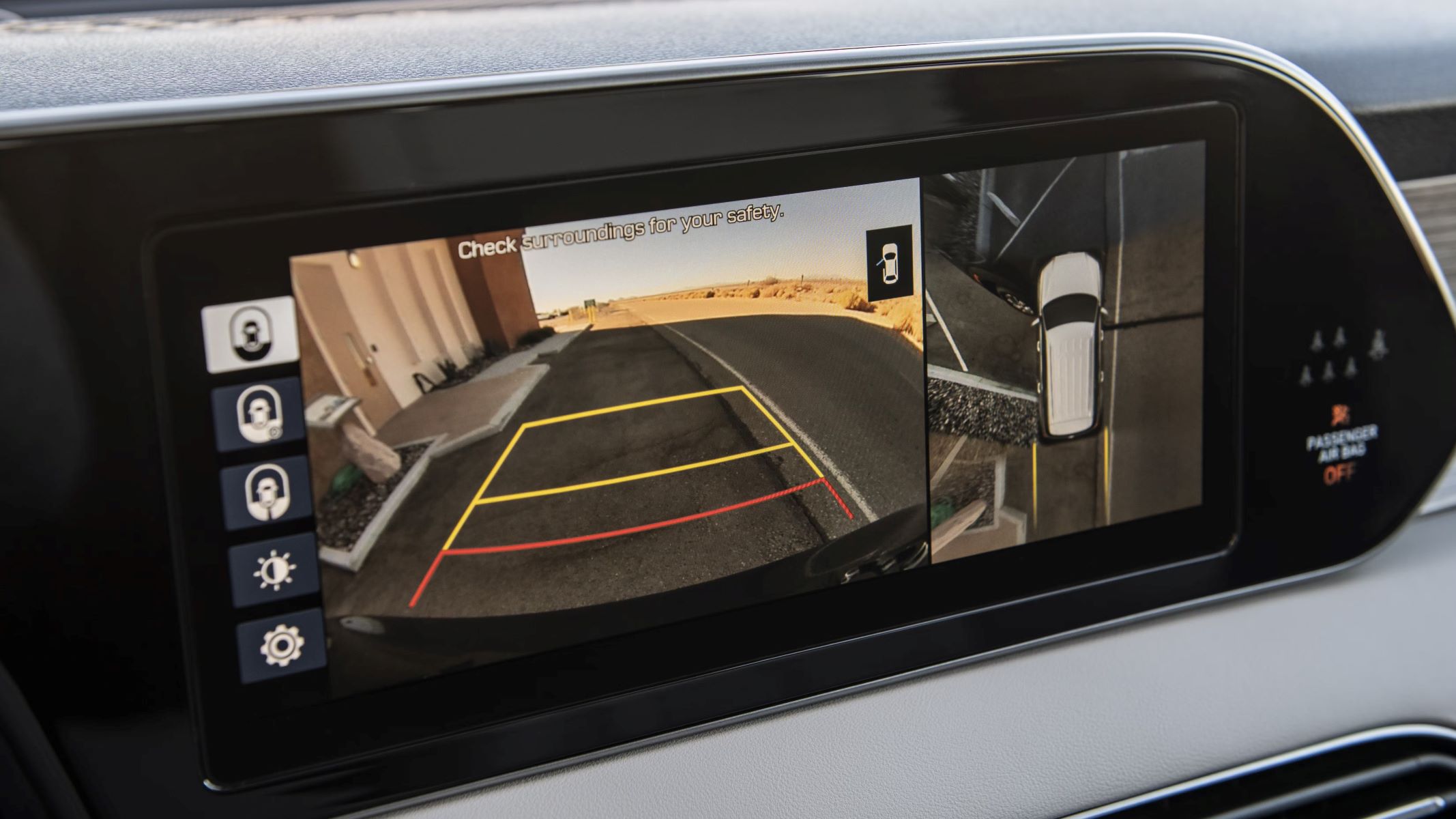Introduction
Welcome to the world of IP cameras, the next generation of surveillance technology. In today’s rapidly evolving digital landscape, security and surveillance have become crucial components in protecting both our personal and professional assets. Gone are the days of relying solely on analog cameras with limited capabilities. With the advent of IP cameras, we now have advanced and versatile surveillance solutions that offer better image quality, easier installation, and remote access from anywhere in the world.
An IP camera, also known as a network camera, is a digital video camera that captures and transmits video footage over an IP network, such as the internet or a local network. Unlike analog cameras that require additional equipment for video processing and storage, IP cameras have built-in processors and can directly transmit video data in a digital format.
How does this technology work? Instead of using traditional coaxial cables or BNC connectors, IP cameras utilize the power of the internet or a local network to transmit video data. The camera captures the video feed, encodes it into a digital format, and sends it over the network to a designated recording device or monitoring software. This digital transmission allows for greater flexibility in terms of video quality, scalability, and remote accessibility.
There are several types of IP cameras available in the market today, catering to different environments and surveillance needs. Some key types include dome cameras, bullet cameras, PTZ (Pan-Tilt-Zoom) cameras, and wireless cameras. Each type offers unique features and benefits, serving specific purposes such as indoor or outdoor monitoring, wide-angle coverage, night vision capabilities, and even facial recognition.
The advantages of using IP cameras are abundant. First and foremost, their superior image quality surpasses that of analog cameras, providing crisp and clear video footage for accurate identification and analysis. Furthermore, IP cameras offer easy installation, as they can be powered and connected through a single Ethernet cable, eliminating the need for separate power cables. With remote accessibility, users can monitor their camera feeds from any device with an internet connection, providing a flexible and convenient surveillance solution for both personal and professional applications.
When selecting an IP camera, there are certain features to consider. These include resolution, low-light performance, storage options, integration capabilities with other security systems, and of course, budget constraints. It is essential to evaluate the specific requirements of your surveillance needs and choose the camera that best matches those needs.
In the following sections, we will explore the common uses of IP cameras, the installation and setup process, as well as tips for maintaining and troubleshooting IP cameras. By the end of this guide, you will have a comprehensive understanding of IP cameras and how they can enhance your security and surveillance systems.
Definition of an IP Camera
An IP camera, also known as an internet protocol camera or network camera, is a digital video surveillance device that captures and transmits high-quality video footage over an IP network. Unlike traditional analog cameras, which require separate cables for power and video transmission, IP cameras utilize an existing network infrastructure, such as the internet or a local area network (LAN), to transmit video data.
IP cameras differ from analog cameras in terms of their method of transmitting video. Analog cameras convert video signals into analog format, which limits the image quality, while IP cameras capture and transmit video as digital data. This digital transmission offers several advantages, including higher resolution, improved image clarity, and superior video compression capabilities.
One of the key components of an IP camera is its built-in web server. This web server allows users to access and control the camera remotely using a web browser or dedicated software. Users can view live video streams, adjust camera settings, and even perform tasks such as pan, tilt, and zoom (PTZ) from anywhere with an internet connection.
IP cameras come in various forms and configurations to cater to different surveillance needs. Some popular types include dome cameras, bullet cameras, PTZ cameras, and wireless cameras. Dome cameras are commonly used for indoor surveillance and are typically mounted on ceilings, while bullet cameras are designed for outdoor use and have a distinct cylindrical shape. PTZ cameras offer the flexibility to pan, tilt, and zoom to capture detailed footage, while wireless cameras provide the convenience of easy installation and flexibility in camera placement.
In terms of video resolution, IP cameras offer a wide range of options, from standard definition (SD) to high definition (HD) and even ultra-high definition (UHD) or 4K resolution. Higher resolution cameras provide more detailed and clearer images, which is beneficial for tasks such as facial recognition or license plate identification.
Another important aspect of IP cameras is their ability to support advanced features such as motion detection, night vision, and two-way audio communication. Motion detection allows the camera to send notifications or trigger alarms when activity is detected in a specific area, while night vision enables the camera to capture clear images even in low-light conditions. Two-way audio functionality allows users to communicate with individuals in the camera’s vicinity through an integrated speaker and microphone.
Overall, IP cameras offer a modern and versatile solution for video surveillance. Their digital capabilities, remote accessibility, and wide range of features make them an ideal choice for both residential and commercial applications. Whether you need to monitor your home, office, or any other property, an IP camera can provide you with the peace of mind and security you desire.
How does an IP Camera Work?
An IP camera, or internet protocol camera, operates by capturing video footage and transmitting it over a network using the IP protocol. Unlike analog cameras that require separate cables for video transmission and power supply, IP cameras utilize one cable, typically an Ethernet cable, to carry both power and data.
Let’s break down the process of how an IP camera works:
- Capturing the Video: The IP camera contains an image sensor that captures video footage. The image sensor can be either a complementary metal-oxide-semiconductor (CMOS) or a charged coupled device (CCD) sensor. These sensors convert the received optical information into an electrical signal, which is then processed and encoded as digital video data.
- Encoding the Video: Once the video is captured, it needs to be encoded into a compressed format for efficient transmission over the network. Common video compression formats used by IP cameras include H.264, H.265, and MJPEG. These compression algorithms reduce the file size while maintaining acceptable video quality.
- Network Transmission: The encoded video data is then transmitted over a network, such as the internet or a local area network (LAN). The IP camera has built-in networking capabilities, allowing it to connect to the network either through a wired Ethernet connection or wirelessly via Wi-Fi.
- Data Reception: On the receiving end, the video data is received by either a network video recorder (NVR), a video management software (VMS), or directly by a computer or mobile device running compatible software. These devices or software applications decode the received data and display the video feed in real-time.
- Remote Viewing: One of the key advantages of IP cameras is their ability to be accessed and viewed remotely. By connecting the camera to the internet or a network with internet access, users can securely access the camera’s video feed from anywhere in the world using a web browser or dedicated mobile app.
- Power Supply: IP cameras can be powered in a variety of ways. Some cameras are equipped with Power over Ethernet (PoE) technology, allowing them to receive both power and data over a single Ethernet cable. Other cameras may require a separate power supply or use wireless power options such as batteries or solar panels.
IP cameras offer several advantages over analog cameras. The digital nature of IP cameras allows for higher resolution, improved video quality, and the ability to integrate advanced features such as motion detection, facial recognition, and analytics. Additionally, IP cameras offer more flexibility in terms of camera placement and scalability, as they can easily be added or expanded to an existing network without the need for additional cabling.
In summary, IP cameras capture and encode video footage, transmit it over a network, and allow for remote access and viewing. This advanced technology revolutionizes video surveillance, providing users with high-quality and easily accessible video feeds for enhanced security and peace of mind.
Types of IP Cameras
IP cameras come in various types and configurations, each designed to cater to specific surveillance needs and environments. Understanding the different types of IP cameras can help you make an informed decision when selecting the right one for your requirements. Let’s explore some common types of IP cameras:
- Dome Cameras: Dome cameras, as the name suggests, are characterized by their dome-shaped housing. These cameras are commonly used for indoor surveillance in places like offices, retail stores, and casinos. Due to their discreet design, dome cameras blend seamlessly into the surroundings, making them less noticeable and harder to tamper with.
- Bullet Cameras: Bullet cameras, also known as cylindrical cameras, are designed for outdoor use. They are typically mounted on walls or ceilings and have a robust housing to withstand harsh weather conditions. Bullet cameras are easily recognizable by their long and cylindrical shape, which allows for easy adjustment and focused monitoring of specific areas.
- PTZ Cameras: PTZ cameras, short for pan-tilt-zoom cameras, offer the flexibility to rotate horizontally (pan), vertically (tilt), and zoom in on specific areas of interest. These cameras are commonly used in large-scale surveillance applications, such as stadiums, parking lots, and industrial facilities, where a wide coverage area and the ability to zoom in for detailed inspection are required. PTZ cameras can be controlled manually or set to automatic patrol certain areas.
- Wireless Cameras: Wireless IP cameras offer the convenience of easy installation and flexibility in camera placement. These cameras use Wi-Fi or other wireless technologies to connect to the network, eliminating the need for running Ethernet cables. Wireless IP cameras are particularly useful in areas where wired connections are difficult to set up, such as historic buildings or temporary surveillance setups.
- 360-Degree Cameras: 360-degree cameras, also known as panoramic or fisheye cameras, provide a comprehensive view of the monitored area without the need for multiple cameras. These cameras utilize a fisheye lens to capture a wide-angle view, eliminating blind spots. The video feed from a 360-degree camera can be dewarped using specialized software, allowing users to view and navigate the footage as if multiple cameras were present.
- Specialty Cameras: There are also specialty IP cameras designed for specific applications. This includes thermal cameras, which use thermal imaging technology to detect heat signatures; license plate recognition (LPR) cameras, which are optimized for reading and capturing license plate information; and facial recognition cameras, which feature advanced algorithms for identifying and verifying individuals.
Each type of IP camera offers unique features and benefits, allowing you to choose the most suitable option based on your surveillance requirements. Consider factors such as the intended location, desired functionality, environmental conditions, and budget when selecting the right IP camera for your needs.
It is worth noting that many IP camera manufacturers offer variations and combinations of these types, providing greater versatility and customization options. By selecting the appropriate IP camera type and configuration, you can enhance the security and surveillance of your property or establishment.
Benefits of Using IP Cameras
IP cameras offer numerous advantages over their analog counterparts, making them a popular choice for security and surveillance systems. Whether you’re securing your home, office, or any other property, here are some key benefits of using IP cameras:
- High-Quality Image and Video: IP cameras provide superior image quality, thanks to their higher resolution and digital technology. These cameras offer sharper and more detailed video footage, allowing for better identification and analysis of objects, people, or events. With advanced features such as wide dynamic range (WDR) and digital noise reduction (DNR), IP cameras ensure excellent image clarity even in challenging lighting conditions.
- Remote Accessibility: With IP cameras, you can monitor your premises from anywhere with an internet connection. By connecting the cameras to a network and using a web browser or dedicated mobile app, you can access live video feeds, playback recorded footage, and control camera settings remotely. This remote accessibility offers convenience and peace of mind, allowing you to monitor your property in real-time, even when you’re away.
- Ease of Installation: IP cameras are relatively easy to install compared to analog systems. Many IP cameras utilize Power over Ethernet (PoE) technology, which allows them to receive power and data through a single Ethernet cable. This eliminates the need for additional power cables, simplifies the installation process, and reduces costs. Furthermore, IP cameras can be easily integrated into existing computer networks, providing a seamless surveillance solution.
- Scalability and Flexibility: IP camera systems offer scalability, allowing you to expand your surveillance network as needed. You can add additional cameras to your system without requiring significant infrastructure changes. Additionally, IP cameras offer flexibility in terms of camera placement since they can be connected to the network wirelessly or through wired connections, giving you more options to install cameras in the most optimal locations.
- Advanced Features: IP cameras come with a wide range of advanced features to enhance your surveillance capabilities. These features may include motion detection, facial recognition, video analytics, and audio capabilities. Motion detection allows cameras to trigger alerts or recording when movement is detected, reducing the need for constant monitoring. Facial recognition technology can identify individuals, providing an added layer of security. Video analytics tools offer insights and data analysis, enabling more effective surveillance strategies.
- Integration with Other Systems: IP cameras can integrate with other security systems, such as access control systems, alarm systems, and video management software. This integration allows for a more comprehensive and cohesive security setup, where different components work together seamlessly for better overall protection. Integration with third-party applications and platforms also enables customizations and automation to suit specific security requirements.
- Cost-Effective Solution: While the initial investment for IP camera systems may be higher compared to analog systems, they often prove to be more cost-effective in the long run. IP cameras require less cabling, reducing installation and maintenance costs. The flexibility and scalability of IP camera systems also eliminate the need to replace an entire system when expanding or upgrading. Moreover, the remote access capability reduces the need for physical patrols or on-site security personnel, saving additional costs over time.
By leveraging the benefits of IP cameras, you can enhance the effectiveness, efficiency, and overall security of your surveillance system. From better image quality and remote accessibility to advanced features and cost-effectiveness, IP cameras provide a modern and versatile solution for your security needs.
Features to Consider When Choosing an IP Camera
When selecting an IP camera for your security and surveillance needs, there are several important features to consider. These features can vary depending on the specific requirements of your property or establishment. Here are some key factors to keep in mind when choosing an IP camera:
- Resolution: One of the most critical factors to consider is the camera’s resolution. IP cameras are available in a range of resolutions, from standard definition (SD) to high definition (HD) and even ultra-high definition (UHD) or 4K. Higher resolution cameras provide clearer and more detailed images, which is essential for tasks such as facial recognition or license plate identification.
- Low-Light Performance: Consider the camera’s low-light performance, especially if you require surveillance in areas with limited lighting. Cameras with good low-light capabilities, such as infrared (IR) or low-light image sensors, can capture clear images even in challenging lighting conditions. Look for cameras with low-light sensitivity ratings or the ability to switch to black and white mode for improved nighttime visibility.
- Field of View: Evaluate the camera’s field of view to ensure it covers the desired area effectively. The field of view is determined by the lens type and focal length of the camera. Cameras with wide-angle lenses provide a broader coverage area, while cameras with zoom capabilities offer the flexibility to focus on specific details or objects within the view.
- Storage Options: Consider how your chosen IP camera handles video storage. Some IP cameras have onboard storage capabilities, such as SD card slots, which allow for local video storage. Others rely on network video recorders (NVRs) or cloud storage solutions. Evaluate your storage needs based on factors like the number of cameras, desired retention period, and budget to determine the most suitable storage option.
- Integration and Compatibility: Check if the IP camera integrates well with other security systems or software. This interoperability allows for a more comprehensive surveillance setup and enables centralized control and management. Look for compatibility with video management software (VMS), access control systems, alarm systems, and other third-party applications that you may currently use or plan to incorporate in the future.
- Network Connectivity: Ensure that the IP camera supports the necessary network connectivity options for your setup. Most IP cameras can be connected via Ethernet for reliable and high-bandwidth connections. If wired connections are not feasible or practical, consider cameras with built-in Wi-Fi capabilities to connect wirelessly to your network.
- Power Options: Assess the power options available for the IP camera. Some cameras support Power over Ethernet (PoE), allowing them to receive power and data through a single Ethernet cable. This simplifies installation and reduces the need for additional power outlets. Alternatively, consider cameras with wireless power options, such as batteries or solar panels, for locations where power may not be readily available.
- Weather Resistance: If you require outdoor surveillance, ensure that the IP camera has the necessary weather resistance ratings. Look for cameras with an IP65 or IP66 rating, which indicates protection against dust and water ingress. These cameras are built to withstand harsh weather conditions and will provide reliable performance even in challenging outdoor environments.
It’s essential to prioritize the features that are most relevant to your specific surveillance needs. Consider factors such as location, lighting conditions, desired functionality, and budget constraints when selecting an IP camera. By carefully evaluating these features, you can choose a camera that best suits your requirements and ensures optimal performance and security for your surveillance system.
Common Uses of IP Cameras
IP cameras have revolutionized the field of video surveillance, providing enhanced features and capabilities compared to traditional analog cameras. These modern devices are employed in various settings and industries to ensure the safety and security of people, property, and assets. Here are some common applications and uses of IP cameras:
- Home Security: IP cameras are widely used in residential settings for home security purposes. Homeowners can monitor their properties, entrances, and surroundings in real-time, even when they are away. IP cameras provide peace of mind by enabling homeowners to keep an eye on their homes, deter potential intruders, and provide evidence in the event of a theft or vandalism.
- Commercial Buildings: IP cameras are extensively used in commercial buildings such as offices, retail stores, and warehouses. These cameras help tighten security, monitor employee activities, prevent theft, and ensure the safety of staff and customers. Access control integration further enhances security by linking IP cameras with keycard or biometric authentication systems, allowing for video verification when granting entry or access to restricted areas.
- Public Places and Transportation Hubs: IP cameras play a critical role in public safety and security in various locations, including airports, train stations, bus stations, and shopping malls. These cameras help monitor crowds, detect suspicious activities, and provide real-time video feeds to security personnel or command centers. Additionally, IP cameras are instrumental in traffic management, enabling traffic control centers to monitor congestion, accidents, and violations for improved road safety.
- Industrial Facilities: IP cameras are deployed in industrial settings such as factories, warehouses, and construction sites to ensure the safety of workers and monitor operations. These cameras can help identify potential hazards, enforce compliance with safety protocols, and provide evidence in case of accidents or workplace incidents. Thermal cameras, a specialized type of IP camera, are used in industrial facilities to detect abnormal heat patterns and identify equipment malfunctions.
- Educational Institutions: IP cameras are used in schools, colleges, and universities to enhance security measures and maintain a safe learning environment. By strategically placing cameras in hallways, common areas, and parking lots, educational institutions can monitor student activities, deter vandalism, and respond quickly to any security threats. IP cameras also aid in traffic management during pick-up and drop-off times.
- Healthcare Facilities: IP cameras are employed in healthcare facilities to ensure the safety and security of patients, staff, and visitors. These cameras help monitor entrances, public areas, patient rooms, and parking lots. In specialized areas such as operating rooms and medication storage rooms, IP cameras can prevent unauthorized access and monitor activities to maintain compliance with protocols and regulations.
- Smart Cities and Surveillance Networks: IP cameras are integral components of smart city initiatives and large-scale surveillance networks. In these setups, cameras are strategically placed throughout the city or urban areas to monitor traffic conditions, detect criminal activities, and improve overall public safety. Video analytics and facial recognition technologies enhance the effectiveness of these surveillance networks, aiding in crime prevention and detection.
These are just a few examples of the countless applications of IP cameras. With their advanced features, remote accessibility, and integration capabilities, IP cameras have become the go-to solution for enhancing security, monitoring activities, and deterring unwanted incidents in various environments.
Installation and Setup of an IP Camera System
Setting up an IP camera system may seem daunting, but with the right knowledge and guidance, it can be a straightforward process. Here are the essential steps involved in the installation and setup of an IP camera system:
- Planning: Start by creating a comprehensive plan for your IP camera system. Identify the areas that require surveillance, determine the number of cameras needed, and decide on the type of cameras suitable for each location. Consider factors such as lighting conditions, desired coverage, and any specific requirements unique to your property.
- Network Infrastructure: Ensure that your network infrastructure is ready to handle the IP camera system. If you are using a wired connection, make sure you have sufficient Ethernet ports and consider employing Power over Ethernet (PoE) switches for both power and data transmission. If utilizing a wireless connection, ensure that your Wi-Fi network has adequate coverage and bandwidth to support the cameras.
- Camera Placement: Position the cameras strategically to maximize coverage and achieve your surveillance goals. Consider mounting options such as walls, ceilings, or specialized mounts based on the camera type. Take into account factors like line of sight, angle of view, and potential obstructions to obtain the most effective surveillance coverage.
- Cabling: If using wired connections, run Ethernet cables from the cameras to the network switch or designated recording device. Ensure that the cables are concealed or well-protected to prevent tampering or damage. For larger installations, consider utilizing cable management systems for a neat and organized setup.
- Power Supply: Connect the IP cameras to a power source. If using PoE technology, connect the cameras to a PoE switch or injector. Alternatively, if the cameras require a separate power supply, ensure that there are nearby power outlets available or consider utilizing power extension options. Follow the manufacturer’s instructions for proper power connections.
- Network Configuration: Configure the network settings for your IP cameras. This typically involves assigning a unique IP address to each camera and configuring other network parameters such as subnet mask and gateway. Use the camera’s configuration interface or specialized software provided by the manufacturer to access and modify these settings.
- Recording and Monitoring Setup: Set up a central recording device or network video recorder (NVR) to store and manage the video footage from the IP cameras. Configure the recording settings, such as continuous recording or motion-based recording, and set up a schedule if desired. Install any required software or apps on your computer or mobile devices to access and monitor the camera feeds remotely.
- Testing and Fine-Tuning: Once the installation is complete, thoroughly test the system to ensure proper functionality. Check the camera feeds for clarity, adjust camera angles if necessary, and verify that the recordings are being stored as intended. Fine-tune any settings such as motion detection sensitivity, image quality, or frame rate to meet your specific requirements.
- Security Measures: Implement security measures to protect your IP camera system. Change default usernames and passwords for the cameras and network devices to prevent unauthorized access. Ensure that your network is secure by using encryption protocols, such as WPA2 for Wi-Fi, and consider implementing firewall rules to restrict access to the cameras from external networks.
- Maintenance and Updates: Regularly maintain and update your IP camera system to ensure its continued performance and security. Check for firmware updates provided by the camera manufacturer and apply them as necessary. Inspect the cameras and connections periodically for any signs of damage or tampering. Regularly backup your recorded footage to prevent the loss of important data.
Following these steps will help you successfully install and set up an IP camera system. If you encounter any challenges during the process, refer to the camera manufacturer’s documentation or seek support to ensure a smooth and effective installation.
Tips for Maintaining and Troubleshooting IP Cameras
Maintaining and troubleshooting IP cameras is essential to ensure their continued performance and reliability. Regular maintenance and proactive approaches can help address potential issues before they escalate. Here are some valuable tips for maintaining and troubleshooting IP cameras:
- Keep Cameras Clean: Regularly clean the camera lenses and protective housings to maintain clear video quality. Use a soft, lint-free cloth and a gentle cleaning solution specifically designed for camera lenses. Avoid using harsh chemicals or abrasive materials that could damage the lenses.
- Regularly Inspect and Clean Cabling: Inspect the cabling and connections to ensure they are secure and free of any damage or signs of wear. Loose or damaged cables can lead to signal loss or interruptions. Clean the connectors periodically to remove any dust or debris that may affect the connection quality.
- Check Power Supply: Verify that the power supply to the cameras is stable and adequate. Inspect power cables for any signs of damage or fraying. Consider using surge protectors or uninterrupted power supply (UPS) devices to protect the cameras from power fluctuations or outages.
- Update Firmware: Regularly check for firmware updates provided by the camera manufacturer. Firmware updates often include bug fixes, security patches, and performance enhancements. Ensure that you follow the manufacturer’s instructions for updating the camera’s firmware to avoid any issues.
- Monitor Storage Capacity: Keep an eye on the available storage capacity of your recording device or network video recorder (NVR). Insufficient storage space may result in footage being overwritten or lost. Consider implementing a scheduled backup routine to off-site storage devices or cloud storage to prevent data loss.
- Configure Motion Detection: Configure motion detection settings according to your specific needs. Adjust sensitivity levels to minimize false alarms triggered by environmental factors such as moving tree branches or passing headlights. Regularly review and fine-tune motion detection settings to ensure accurate event recording.
- Regularly Test and Review Camera Feeds: Periodically test the camera feeds to ensure they are working correctly and providing the desired coverage. Review the footage for image quality, clarity, and any potential issues or anomalies. Pay particular attention to areas of concern or high-security zones.
- Monitor Network Performance: Keep an eye on your network’s performance to ensure it can accommodate the demands of the IP camera system. Monitor for any network latency, bandwidth issues, or abnormal traffic patterns that could affect the camera feeds. Optimizing your network settings or upgrading network equipment may be necessary to maintain optimal performance.
- Secure the Camera System: Implement security measures to protect your IP camera system from unauthorized access. Change default usernames and passwords for all cameras and network devices. Regularly update passwords and consider using strong passwords that include a combination of letters, numbers, and special characters.
- Document System Configuration: Keep a record of the IP camera system’s configuration, including camera locations, network settings, and access credentials. This documentation serves as a reference and can be invaluable when troubleshooting or making changes to the system in the future.
- Seek Professional Support: If you encounter persistent or complicated issues with your IP camera system, do not hesitate to seek professional support. Contact the camera manufacturer’s technical support team or consult with a qualified technician who specializes in IP camera systems.
By following these tips, you can ensure the optimal performance, longevity, and security of your IP camera system. Regular maintenance and proactive troubleshooting can help you detect and address issues promptly, minimizing downtime, and maximizing the effectiveness of your video surveillance system.
Conclusion
IP cameras have revolutionized the world of video surveillance, offering superior image quality, remote accessibility, and advanced features compared to analog cameras. Whether you are securing your home, office, or any other property, IP cameras provide a modern and versatile solution that enhances security and peace of mind.
In this guide, we explored the definition of an IP camera and how it works, as well as the different types of IP cameras available in the market. We discussed the benefits of using IP cameras, including high-quality image and video, remote accessibility, easy installation, scalability, and advanced features. Moreover, we highlighted the key features to consider when choosing an IP camera, such as resolution, low-light performance, field of view, storage options, and integration capabilities.
We delved into the common uses of IP cameras across various settings, including residential, commercial, public, industrial, educational, healthcare, and smart city environments. Furthermore, we provided insights into the installation and setup process of an IP camera system, emphasizing planning, network infrastructure, camera placement, cabling, network configuration, and recording and monitoring setup.
To ensure the continued performance and reliability of IP cameras, we discussed essential tips for maintaining and troubleshooting them. These tips highlighted the importance of keeping cameras clean, inspecting and cleaning cabling, checking power supply, updating firmware, monitoring storage capacity, configuring motion detection, regularly testing camera feeds, monitoring network performance, securing the camera system, documenting system configuration, and seeking professional support when needed.
As technology continues to evolve, IP cameras will only become more advanced and sophisticated. Their capabilities, integration options, and ease of use will further enhance the effectiveness of security and surveillance systems in various industries and settings.
By understanding the features, benefits, and installation process of IP cameras, you can make informed decisions when selecting the right camera system for your unique needs. Remember to regularly maintain and monitor your IP camera system to ensure optimal performance and security.
Embrace the power of IP cameras and take advantage of the advancements in video surveillance technology to protect what matters most to you.

























